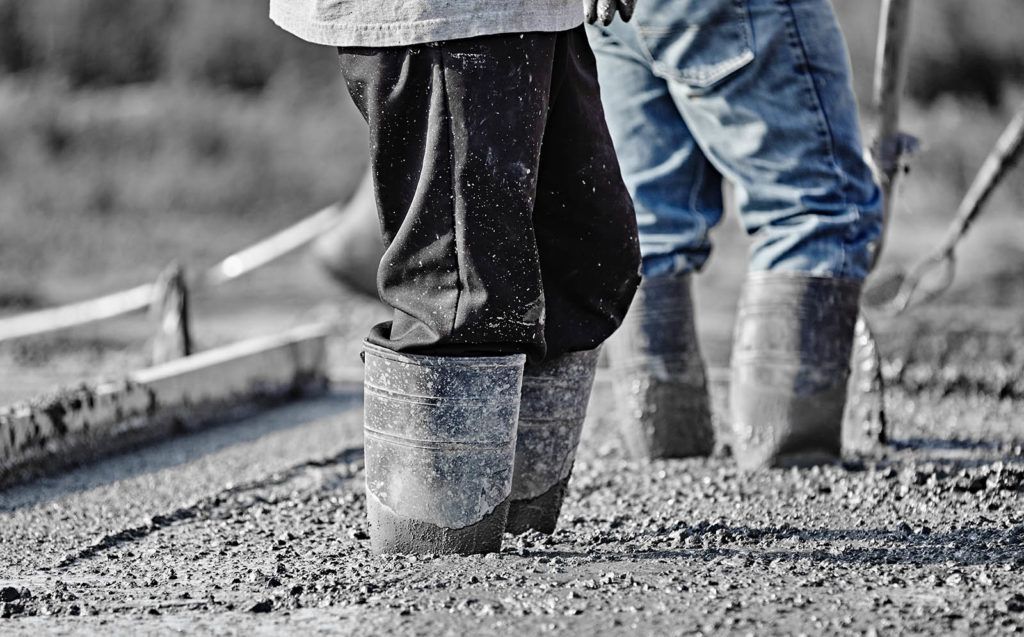Best Practices For Pouring Concrete In The Winter

Contrary to popular belief, concrete can be placed, finished, and cured at any temperature, even sub-zero temperatures. You just have to take extra precautions to keep the concrete from freezing.
First, a quick refresher course on concrete curing. Concrete transforms from a liquid to a solid material through a chemical reaction. The colder the temperature of concrete, the slower the speed of the reaction. In winter, your enemy is the cold. The concrete needs to be kept from freezing until it hardens enough to resist the pressures caused by water freezing within the concrete.
What happens when concrete freezes before it cures?
If newly placed concrete freezes, the damage caused is immediate and permanent. Even if you warm the concrete, and allow it to cure, the damage is done. According to the Portland Cement Association, if concrete freezes while it is still fresh, or before it has developed sufficient strength to resist the expansive forces associated with the freezing water, the concrete loses up to 50 percent of its compressive strength.
Best practices for pouring concrete in cold weather
Pay attention to the ground you are pouring the concrete on. The air temperature may be above freezing, but the ground may be frozen. And you must never pour concrete on frozen ground. Warm the ground with concrete blankets or black plastic for a few days before you do the pour.
Counter the effects of freezing temperatures by doing any or all of the following steps:
- Add additional cement to your mix
- Add hot water instead of cold
- Heat the aggregates in the mix
- Add a chemical accelerator, such as calcium chloride or a non-chloride admixture
- Use a water-reducer to reduce bleed water
Curing concrete during cold weather
Since the curing stage is when the damage will be caused if you don’t take precautions, take precautions. Once you have poured the concrete, protect the concrete as it cures. Cold weather extends set times. The colder it gets, the longer your concrete takes to set.
An industry rule of thumb says that every 10°C drop in concrete temperature will double the set time. So, a pour that sets in six hours at 20°C will take 12 hours at 10°C and 24 hours at -1°C.
In winter months, you must protect and cure your concrete for at least five days. Use blankets or straw over the plastic to insulate the slab. If you leave the concrete exposed, or if you uncover it too soon, the top layer of the concrete can freeze and pop off. And even if it doesn’t freeze, the top will never be as tough as it would have been had it been protected.
Tilt-up construction during cold weather
Cold weather causes delays during construction, even with tilt-up construction. Since everything is done on site, drops in temperature affect how quickly tilt-up walls can be erected. The key to keeping delays to a minimum is to use heaters during the winter months so that you can form, pour and lift walls into place throughout the winter.

